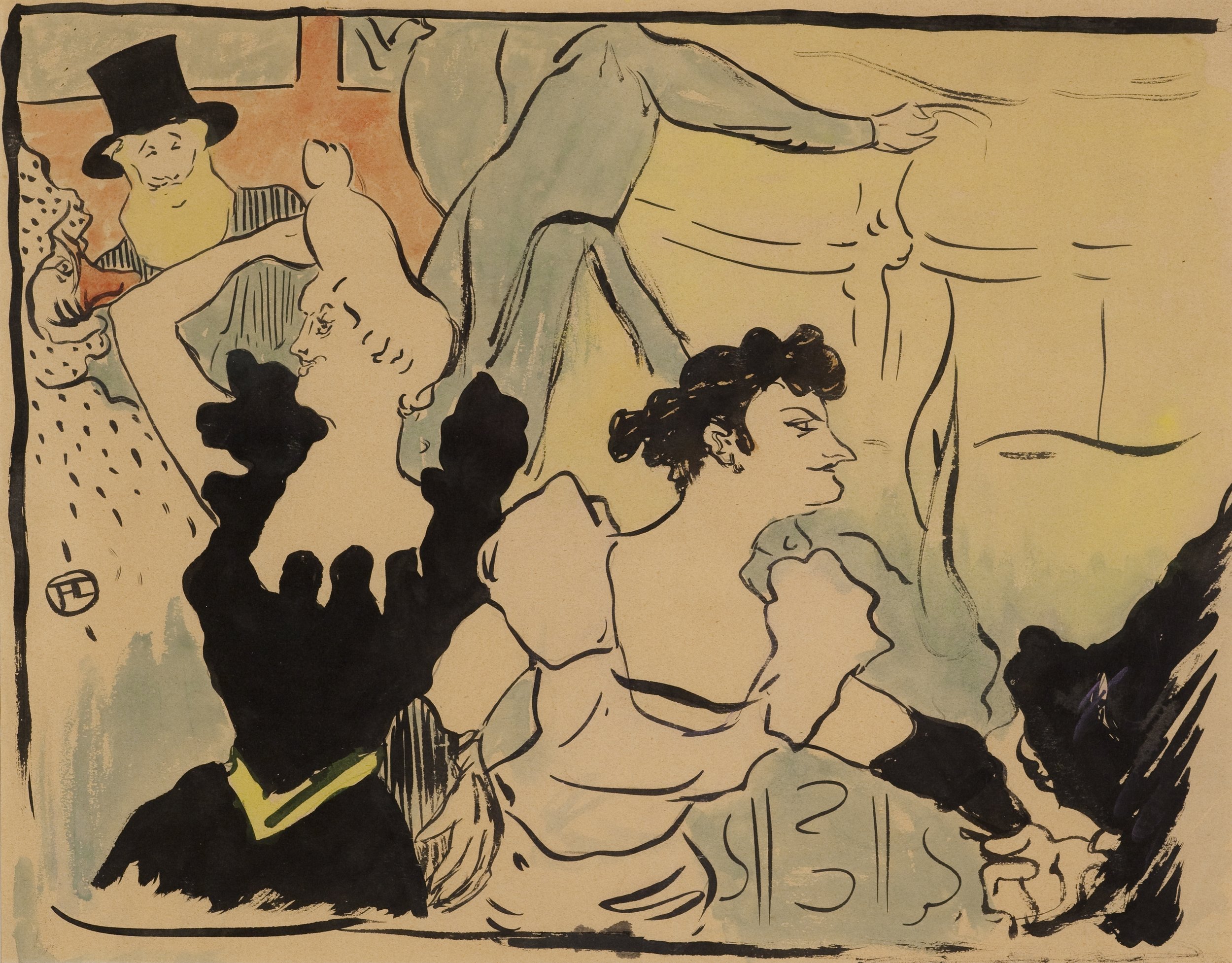“Au bal masque - les fetes parisiennes- nouveaux confettis” - Henri de Toulouse Lautrec 1892
Henri de Toulouse Lautrec was known as a printmaker, draughtsman caricaturist, and an illustrator. He painted in what’s known today as the Post-impressionist period, along with other artists that he knew, such as Vincent Van Gogh, Edgar Degas, and Paul Gaugin.
Lautrec was born into an aristocratic family in southern France in 1864. At a young age he broke both legs, likely due to an undiagnosed bone disease, which stunted their growth and would affect him for the rest of his life. As an adult he would live and work and be artistically inspired by those of a lower socio-economic status in his community. Because of his disability he felt more comfortable and would immerse himself in the life of the “lower classes”, and often made them the subject matter and inspiration for his paintings.
In 1881 Lautrec settled in the Montmartre district of Paris where he met other artists such as Edgar Degas and Vincent Van Gogh as well as individuals that gravitated toward the cabarets, dance halls, and brothels.
In 1891 Lautrec started making posters for the Moulin Rouge Cabaret theater. Many artists looked down on Lautrec for this, because at the time making posters was not considered a notion of “high art”. Regardless he continued to make art for the Moulin Rouge despite what other artists thought of him, and many of his works have become famous, and recreated or parodied throughout history. You may recognize his character portrayed in many movies, including “Moulin Rouge” and his artwork appearing or referenced in cartoons such as “Spongebob Squarepants”. One lesser known detail about Toulouse Lautrec is that he was an excellent cook. He enjoyed cooking with recipes, experimenting with them and even creating his own dishes. After his death in 1901, his close friend and art dealer, Maurice , published a cookbook of Lautrec’s recipes in tribute to him.
Henri Toulouse Lautrec created “At the Masked Ball” in 1892 using watercolor, India ink and pencil on paper. A similar style like many of his posters for the Moulin Rouge, this artwork has a gestural feel to it, which like many of his paintings and prints gives the illusion of movement and warmth. Lautrec retained his aristocratic aloofness and sense of superiority and in doing so, became an unprejudiced observer of life. He recorded and translated his observations in his painting, drawing and prints. His erratic behavior and lifestyle were amplified by increased drinking, causing his health and artistic output to suffer dramatically, eventually leading to his death at the age of 36.
This artwork is a part of the OJAC permanent collection bequested of the Marshall R. Young Jr. Estate in 2001.
Kellie Bellah
Administrative Assistant and Visitor Services Associate



